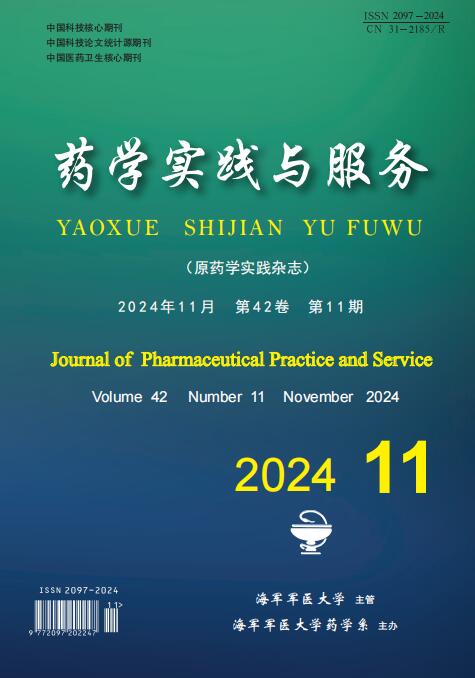-
脓毒症(sepsis)是由于宿主对细菌、真菌、病毒等感染的反应失调而引起的多器官功能障碍,具有很高的致死率,是感染致死的首要原因[1]。近年来,虽然人类在重症监护领域已经取得了长足的进步,但是严重脓毒症的总死亡率仍高达26.7%[2]。针对脓毒症的治疗,目前绝大多数仍是采用支持性疗法,临床可用的干预措施只有非常有限的几种,如液体复苏、应用抗生素和类固醇药物等。然而,这些措施往往收效甚微。因此,研发抗脓毒症新药, 改善患者预后,降低脓毒症死亡率,是目前亟待解决的问题。本文对近年来脓毒症治疗相关的研究进行综述,以期为今后抗脓毒症的研究提供思路。
-
在过去的40多年里,医药工作者针对脓毒症的抗生素治疗开展了深入的研究。在确诊脓毒症或脓毒症休克后,尽快给予患者有效的抗生素已获得医疗工作者广泛的认可。2021年,拯救脓毒症运动(SSC)指南建议,对于可能发生脓毒症休克或高度可能发生脓毒症的成年人,应在确诊后1 h内立即使用抗生素。与此同时,人们也越来越关注抗生素的滥用问题,指南建议对于感染可能性低且无休克的成年人,应推迟使用抗生素,以免加快病原体耐药的进程[3]。然而不幸的是,近年来多重耐药菌感染所引发脓毒症的比例一直未能得到遏制,新型抗生素的研发速度又远远滞后于细菌耐药的产生速度,抗生素作为脓毒症治疗的一线药物,已经陷入了困境。
研发针对脓毒症病理生理进程的治疗药物,是解决目前脓毒症危害的必由之路,人们早先已经进行了多项尝试,例如针对细胞因子TNF-α、IL-6、IL-1的药物Etarnercept、Aflimomab、Anakinra等;针对毒力因子LPS、革兰氏阴性菌内毒素、TLR4的药物HA-1A、ES、Eritoran等;针对凝血障碍的药物活化蛋白C、抗凝血酶Ⅲ、肝素等;以及针对免疫细胞的刺激因子G-CSF和GM-CSF等。这些研究虽然在临床前研究中取得了一定效果,但在进入临床试验后大多以失败告终[4]。尽管困难重重,目前仍有许多研究在不懈推进,并取得进展。
-
近10年来,人们对脓毒症病程中的免疫学变化进行了广泛而深入的研究,揭示了免疫抑制在脓毒症发病机制中的作用。各种研究表明,在脓毒症的最初炎症阶段存活下来的患者很容易受到机会性微生物的院内感染而导致晚期死亡。据统计,超过70%的患者死亡发生在脓毒症发病的3 d之后,而其中的大部分又发生在脓毒症发病的后几周[5]。免疫功能障碍或免疫抑制在脓毒症后延迟死亡的病理中起着关键作用[6]。因此,旨在刺激免疫系统的免疫治疗策略在逆转脓毒症诱导的免疫抑制和改善患者预后方面具有巨大的潜力。
-
IL-7被认为是人类T细胞发育必不可少的多功能细胞因子,它可以影响T细胞的增殖和分化,在脓毒症期间具有显著改善T细胞稳态的潜力[7]。IL-7与脓毒症治疗相关的主要作用机制包括诱导T细胞增殖,增加T细胞谱系的多样性,上调抗凋亡蛋白Bcl-2,减少淋巴细胞凋亡,增加黏附分子的表达,使其更好地运输和募集,以及帮助中性粒细胞向感染部位募集等[8-9]。
2018年公布的首个通过IL-7逆转脓毒症诱导的获得性免疫缺陷的随机临床试验IRIS-7(n=27),其结果表明,T细胞生长因子CYT107 的耐受性良好,没有引起细胞因子风暴、炎症恶化或器官功能障碍的迹象,并且逆转了CD4+和CD8+ T细胞的显著丧失,使淋巴细胞计数和循环中的CD4+和CD8+ T细胞增加了3~4倍,促进了T细胞的增殖和活化[10]。2023年,该课题组公布了后续的一项为期90 d的随机临床试验NCT03821038(n=40),结果表明,与安慰剂相比,静脉注射CYT107仍可逆转脓毒症导致的淋巴细胞减少,使淋巴细胞计数和循环中的CD4+和CD8+ T细胞增加2~3倍,但有可能给患者带来短暂的呼吸窘迫,因此,通过肌肉注射CYT107是更加优选的治疗方案[11]。目前,CYT107在临床试验中已经取得了一定的成效,但仍需要更大规模的临床试验来证实这一结果。
-
当脓毒症发生时,T细胞耗竭的标志物——程序性细胞死亡蛋白(PD-1)及其相应的配体(PD-L1)的表达上调是免疫抑制的特征之一。在动物脓毒症模型和脓毒症患者中,PD-1/PD-L1的这种上调与死亡率的增加相关。临床前脓毒症模型和对脓毒症患者血液样本的分析表明,通过使用抗PD-1/PD-L1抗体阻断这一途径进行免疫调节,可以恢复免疫细胞功能,提高存活率。因此,针对PD-1/PD-L1的抗体治疗作为脓毒症免疫治疗的新方法正受到广泛关注[12-13]。
2019年,两项针对脓毒症患者使用免疫检查点抑制剂的1b期临床研究BMS-936559(n=24)[14]和NCT02960854(n=31)[15]都显示出了这一疗法具有良好的耐受性和安全性,并能使患者28 d以上的免疫状态在一定程度上恢复。但同样,需要进一步的临床试验来验证其安全性和有效性。
-
天然免疫细胞介导的全身炎症反应失调是脓毒症发病的关键机制之一。在脓毒症发病早期,各种病原相关分子模式(PAMP)如细菌肽聚糖、内毒素等,与免疫细胞表面的特异性受体结合触发了各级促炎症介质的顺序释放。这些促炎症介质的单独或协同作用,导致了脓毒症的发生发展。并且随着病程的进展,包括巨噬细胞、中性粒细胞在内的免疫细胞在靶器官的大量堆积,加剧了炎症介质在靶器官的积累,从而造成了多器官功能的损害[16]。因此,针对炎症相关通路的研究,一直是研究的热点问题。虽然先前一系列靶向诸如TNF-α、IL-6、LPS、TLR4的药物最终都以失败告终,但目前仍有许多富有潜力的靶点值得我们探索。
-
黏附斑激酶(FAK)是一类胞质非受体蛋白酪氨酸激酶,属于蛋白酪氨酸激酶超家族,与细胞骨架的动态变化有关,富含脯氨酸的酪氨酸激酶2(Pyk2)是FAK家族的一种非受体酪氨酸激酶。近年来,FAK和Pyk2已被确定为新的介导炎症反应的关键参与者,参与动脉粥样硬化、哮喘的发病以及肿瘤的转移等[17-19]。
与此同时,近期一项有关FAK-Pyk2通路相关的研究表明,通过药物抑制FAK-Pyk2通路可以提高临床相关的脓毒症造模小鼠的生存率,并对造模所致的器官功能障碍产生保护作用。这种有益的作用可能是由于通过调节FAK-Pyk2下游的炎性级联反应,如p38-MAPK和NLRP3,阻止了白细胞的过度浸润和相关的局部过度炎症的产生[20]。
-
Rho属于低分子量GTP酶的Ras超家族,目前研究最多的Rho 成员主要有Rho(A、B、C)、 Rac(1、 2、 3)和Cdc42 三类;Rho相关卷曲螺旋形成蛋白激酶(ROCK)又称为Rho激酶,是Rho下游的靶效应分子,在全身组织中都有分布。Rho/ROCK通路介导了许多病理生理信号,主要包括细胞的迁移、吞噬、收缩、黏附和细胞骨架的重组等。目前,一项针对Rho/RCOK通路与脓毒症关系的研究表明,ROCK抑制剂可减轻LPS吸入模型所诱导的小鼠肺损伤;ROCK抑制剂的预给药抑制了LPS诱导的IL-1β、IL-6生成和MPO活性的增加,阻断NF-κB信号通路,并且可以减轻LPS所诱导的凝血障碍[21]。
-
脓毒症患者的治疗反应和临床结果在不同的研究中差异很大,最近人们认为这可能取决于潜在的脓毒症表型,这些表型以不同的器官功能障碍模式为特征,如凝血级联调节的失调[22]。虽然约50%~70%的脓毒症患者存在凝血功能异常,但只有35%的患者出现明显的弥散性血管内凝血(DIC)[23],以此为特征的表型被称作脓毒症相关凝血障碍(SAC),SAC的典型变化包括国际标准化比值(INR)升高和血小板计数降低,而SAC严重程度的增加,往往与较高的脓毒症死亡率挂钩[24]。目前,人们针对凝血级联反应的靶向治疗已经取得了一定进展,其中,重组人可溶性血栓调节蛋白(rhsTM)便是其代表之一。
rhsTM具有抗凝和抗炎作用,并且能够抑制损伤相关分子模式(如HMGB-1和组蛋白)引起的炎症和器官损伤[25]。近几年有研究表明,具有SAC表型的脓毒症患者可能可以通过使用rhsTM获益。
2019年,一项为了确定在标准治疗的基础上加用rhsTM(ART-123)对SAC患者的不良反应和疗效的Ⅲ期随机临床研究SCARLET(n=816)被公布。其结果表明,在800名完成了研究并被纳入完整分析的患者中,ART-123治疗组和安慰剂组的28 d全因死亡率在统计学上没有显著差异[分别为395名患者中的106名(26.8%)和405名患者中的119名(29.4%),P=0.32][26]。在随后的针对这项试验后分析发现,尽管ART-123治疗组28 d全因死亡率的下降并不显著,但是与安慰剂组相比,接受ART-123治疗的患者的每个生物标记物与基线相比都有显著变化(P<0.05)[25]。
2020年,一项纳入了
1633 名患者的荟萃分析则显示,在脓毒症患者中,SAC与较高的28 d死亡率相关。应用rhsTM可降低SAC患者28 d死亡率,但不能降低非SAC患者的死亡率[27]。综上所述,针对具有SAC表型的脓毒症患者,使用rhsTM治疗是具有一定价值的,但仍需要进一步的临床试验来确证。
-
在脓毒症的病理生理过程中,血管内皮细胞功能的改变是其中的重要一环,它关系着多种细胞因子的激活、炎性递质的释放以及凝血系统的激活,并且在脓毒症休克和多器官功能损伤中扮演着重要作用。目前,针对血管内皮稳态的靶向药物研究也已经取得了一定进展。
肾上腺髓质素(ADM)是一种主要由血管内皮细胞表达和分泌的自由循环肽,在血管内显示出血管保护活性,它可以关闭内皮细胞之间的间隙,随后防止血管内液体和其他化合物不受控制地漏入间质-血管外空间(即血管渗漏);但在间质组织中,ADM却具有血管舒张特性,当浓度较高时会引起低血压,这在脓毒症患者中常常会导致病情进展和恶化。Adrecizumab(ADZ)是一种针对肾上腺髓质素N末端的靶向治疗药物,通过靶向生物活性肾上腺髓质素(bio-ADM)来恢复和维持血管完整性,并能够增强ADM对内皮屏障的保护作用。脓毒症休克的临床前模型显示,使用ADZ调节ADM的信号通路,可以改善内皮稳态、器官功能,并提高宿主存活率,因此,该治疗策略可能通过提供减轻器官功能障碍的机会来改善脓毒症患者的预后[28-29]。
2021年,一项旨在调查ADZ安全性,耐受性以及临床疗效和药动学的Ⅱa期临床研究AdrenOSS-2(n=301)公布了结果显示使用ADZ治疗脓毒症的耐受性较好,并且ADZ治疗组相较于安慰剂组可以更快地降低患者的SOFA评分(P=0.007)[29]。目前针对肾上腺髓质素治疗的研究显示出了较好的研究前景,进一步的Ⅱb/Ⅲ期临床研究可能将很快开始。
-
脓毒症从本质上来说,不能将其定义为某一个具体的疾病,而是由感染引起的多器官功能不全的综合征,因此具有相当大的异质性。其异质性可以体现为宿主的基础状态不尽相同;脓毒症感染的病原菌和感染的部位不同;累及器官的种类数量,以及严重程度的不同等。可能正是由于这些异质性,才导致过去针对单一靶点的药物在进入临床试验后以失败告终。
针对脓毒症的这一特点,近年来人们基于基因组学指标、生物标志物和临床指标、临床大数据等将脓毒症进行了分型,力求对不同患者进行更精细化的治疗。例如2019年,Seymour等[22]通过临床大数据和机器学习方法,将脓毒症分为了α、β、γ、δ 4个表型,其中α表型的临床特点为使用升压药物的剂量最小;β表型以高龄患者为主,具有多种合并症及肾功能不全;γ表型患者炎症反应明显,且以呼吸功能不全居多;δ表型则更易发生肝功能不全及休克。由此可见,对于不同表型的脓毒症患者,其对应的治疗方式以及用药的侧重点也必然不同。因此对于未来的脓毒症药物研发,研究人员如果能够更加着眼于患者的异质性特征,针对不同表型的患者研发不同的药物,也许能够取得更加令人满意的结果。
Progress on the treatment of sepsis
doi: 10.12206/j.issn.2097-2024.202405059
- Received Date: 2024-05-29
- Accepted Date: 2024-08-25
- Rev Recd Date: 2024-07-08
- Available Online: 2024-11-19
- Publish Date: 2024-11-25
-
Key words:
- sepsis /
- pharmacotherapy /
- immunotherapy /
- inflammation /
- coagulation management
Abstract: Sepsis is a severe and life-threatening symptom that poses a significant risk to human health. Treatment mainly involves supportive care, but research on new drugs is ongoing. Advancements have been achieved in the management of immune function, inflammatory pathway, blood coagulation, and vascular endothelial homeostasis in sepsis. The advances in the treatment of sepsis in recent years were these reviewed in this article.
| Citation: | SONG Zecheng, CHEN Linlin, LU Renyi, LIU Mengxiao, WANG Yan. Progress on the treatment of sepsis[J]. Journal of Pharmaceutical Practice and Service, 2024, 42(11): 457-460, 502. doi: 10.12206/j.issn.2097-2024.202405059 |







 DownLoad:
DownLoad: